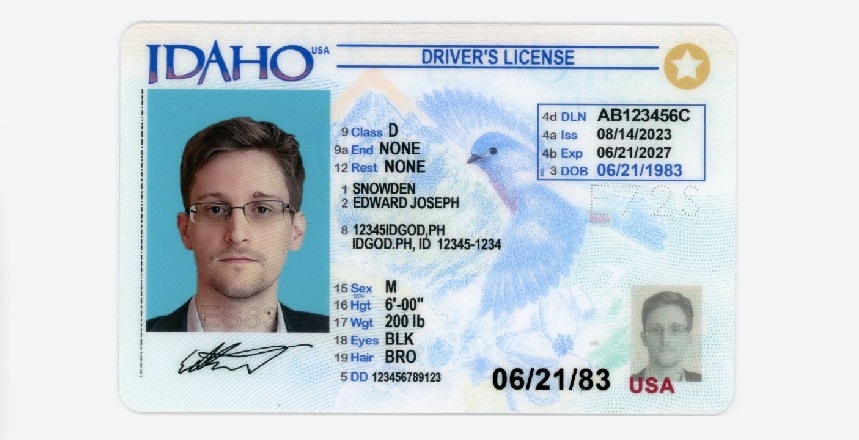
Key Features That Pass Inspection.
Getting a realistic fake ID with accurate front and back features isn’t as simple as it seems. The real challenge lies in replicating the exact details found on government-issued IDs—both on the front and back.
From holograms and barcodes to precise fonts and materials, every detail plays a critical role in passing inspections. This guide covers everything you need to know about fake ID front and back features that actually work.
Poorly designed fake IDs are easy to spot. Bouncers and scanners are trained to look for flaws like inconsistent fonts, blurred text, or missing security features. If these elements don’t align with the real thing, your ID won’t hold up under scrutiny.
In this post, we’ll break down the key features that make a fake ID front and back realistic, the advanced materials and techniques involved, and what you need to know to avoid poorly made replicas.
Looking for a Realistic Fake ID That Works?
IDGod.ph delivers premium fake IDs with all security features, including:
- ✔️ Accurate front and back designs
- ✔️ Scannable barcodes & holograms
- ✔️ State-specific templates
- ✔️ Free duplicates included
Why Front and Back Features Are Crucial for Fake IDs
The front and back features of a realistic fake ID are essential for its authenticity and functionality. Both sides must precisely replicate government-issued IDs, including security features visible under scans, to pass visual and electronic inspections.
Front Side Features That Matter
The front of a realistic fake ID must include:
- High-resolution photo with proper lighting and background
- Accurate typography matching state fonts
- Precisely placed holograms and UV markings
- Correct state seal placement and coloration
- Properly formatted personal information
Back Side Security Elements
The back of a high-quality fake ID requires:
- Fully encoded magnetic barcode matching front data
- Properly formatted 2D barcode (PDF417 or QR code)
- Microprinting in designated areas
- State-specific design elements and warnings
For a fake ID to pass front and back inspection, both sides must align perfectly in design, data encoding, and material quality.
Materials and Techniques for Scannable Fake IDs
Creating a realistic fake ID with proper front and back features requires premium materials and advanced production techniques.
Authentic Feel Materials
- Polycarbonate Teslin: Used by many DMVs, provides perfect flexibility and durability
- Hi-Tech PVC: Matches the feel of newer state-issued IDs
- Premium Laminates: Replicates the glossy finish of real IDs
- Correct Thickness: 30 mil thickness standard for most state IDs
Advanced Security Features
- Custom Holograms: State-specific holographic overlays
- UV Printing: Invisible markings visible under blacklight
- Laser Engraving: For raised text on premium IDs
- Microprinting: Tiny text that appears as solid line to naked eye
Why Scannability Is Essential
A realistic fake ID must pass electronic verification. Key scanning features include:
- Magnetic Stripe Encoding: Contains all ID information in digital format
- 2D Barcode Scanning: PDF417 or QR code must match front data
- RFID Compatibility: For states that use chip technology
At IDGod.ph, all IDs include fully encoded magnetic stripes and scannable barcodes that pass commercial scanners.
Realistic Replica ID vs. Poor Quality: Key Differences
| Feature | Realistic ID | Poor Quality |
|---|---|---|
| Front Design | State-specific, accurate fonts | Generic, wrong fonts |
| Back Features | Working barcode, proper encoding | Non-scannable or missing |
| Materials | Teslin/PVC, correct thickness | Flimsy, wrong feel |
| Holograms | Custom, state-specific | Generic or missing |
Why Choose IDGod.ph
When you need a fake ID with perfect front and back features, IDGod.ph delivers:
- 40+ State Templates: Accurate designs for nearly every U.S. state
- Premium Security Features: Holograms, UV, microprinting
- 100% Scannable: Working barcodes and magnetic stripes
- Discreet Shipping: Plain packaging with tracking
- Free Duplicates: Backup ID included with every order
- Zero Risk – 100% ScamAdviser verified, verify our rating
Ready for a Realistic Replica ID That Works?
Order today and get your high-quality fake ID with all security features
Order Now – Ships in 2 WeeksFinal Thoughts on Best Replica ID Features
Getting a fake ID with accurate front and back features requires attention to numerous details. From material selection to security elements and scannability, every component must work together to create a convincing ID.
While this guide covers what makes a convincing fake ID, we always recommend checking your local laws regarding ID use. Quality providers like IDGod.ph ensure your ID looks and functions authentically, but responsible use is always advised.
Related Articles

